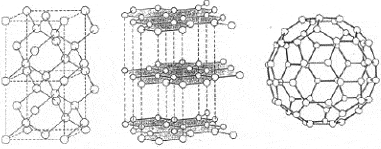Unparalleled properties of fullerene (the third form of carbon and graphene) in nanoelectronics PHD (based on nanoelectronics PHD)
Researcher and author PhD student : Afshin Rashid
Note: Fulleren is the third form of carbon along with graphite and diamond, which has unique properties and makes it resistant to flow resistance in nanoparticles, organic nanoparticles, nanoparticles and nanosensors (nanosensors).
The unique properties of fullerene make a wide range of applications, from nanoelectronics to medicine. Fullerenes can act as superconductors through semiconductor conductors and are exceptional radical transmitters . Strong durability, feature can easily be used in current transfer characteristics as a modifier, and this has led to changes in their electronic structure, solubility and physical properties (structure).
The structure and structure (fullerenes) in nature have five diamond allotropes, graphite, nanotubes, shapeless carbon, and fullerenes, all of which are solid. The base of the fullerenes are the plates in the graphite, except that in the atomic structure of the fullerens, instead of the regular hexagons in the graphite plates, there is a series of regular hexagons and pentagons that are placed side by side. They have taken and formed the Fullern butter. The placement of these pentagons and hexagons together is essential for the formation of a spherical structure. In fact, spherical structures cannot be obtained from graphene plates without the presence of pentagons in the graphene structure.
Conclusion:
The first Fleurin discovered was Bucky Ball; The most common properties of fullerenes are related to these two types, C70 and C60 .
Author: PhD Student ( Afshin Rashid)
PhD student in Nano-Microelectronics at Islamic Azad University, Science and Research Branch, Tehran




